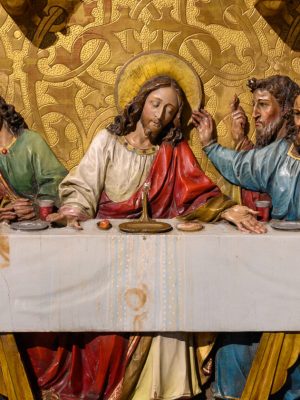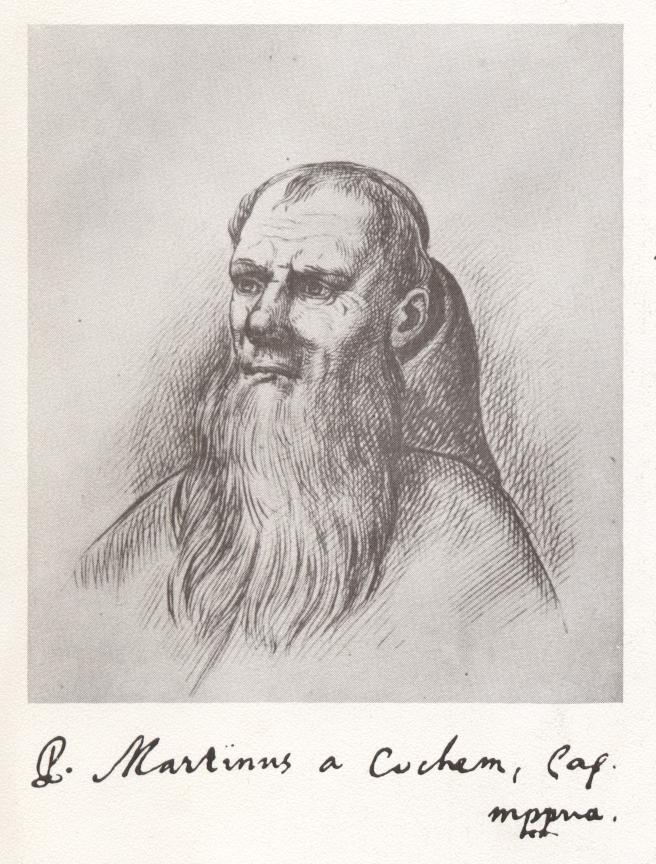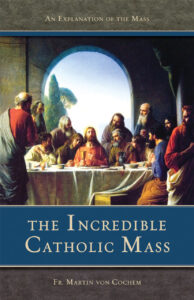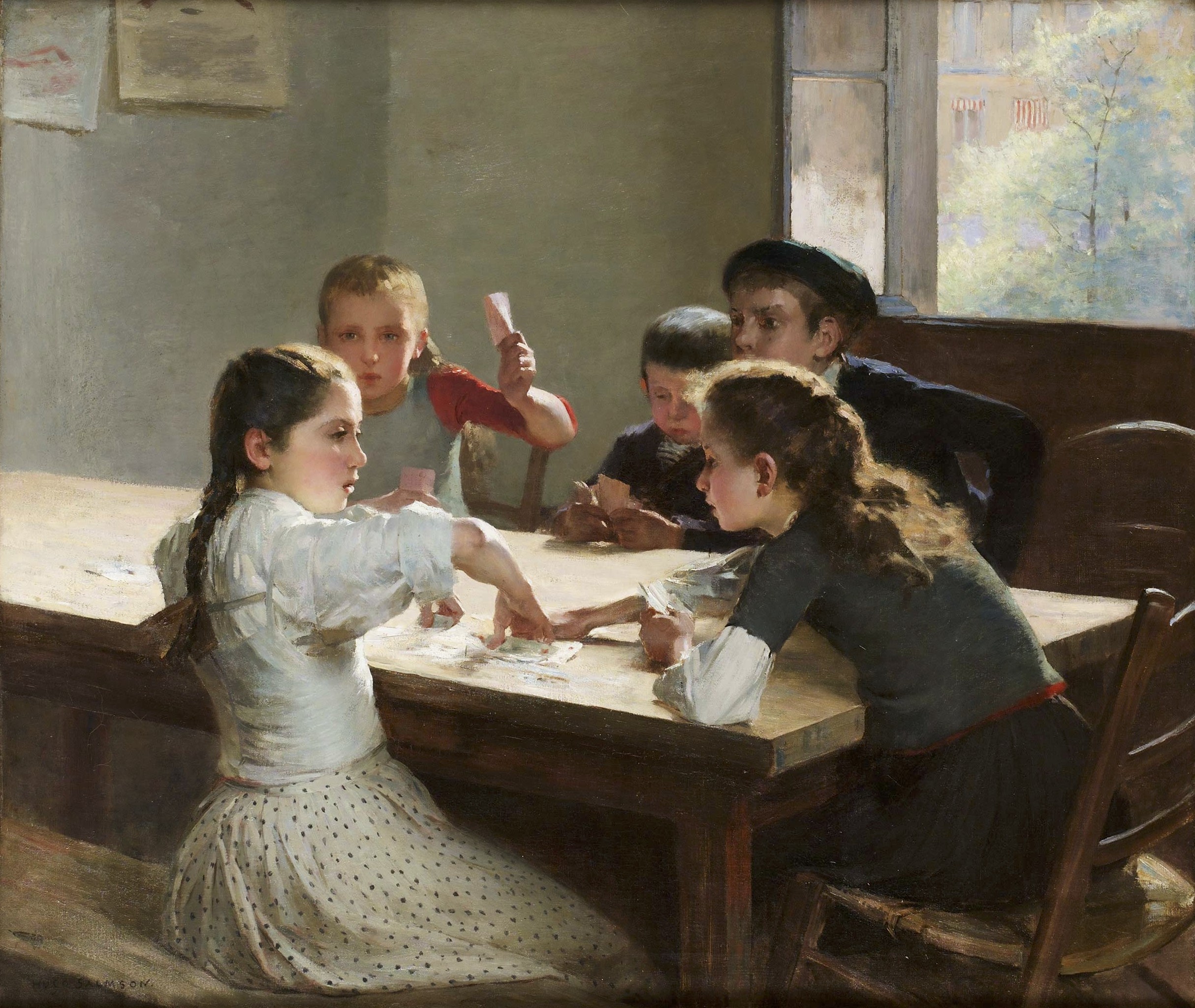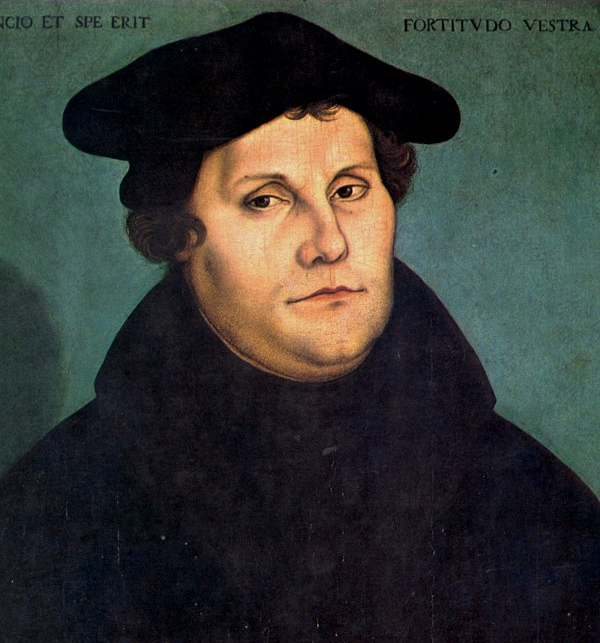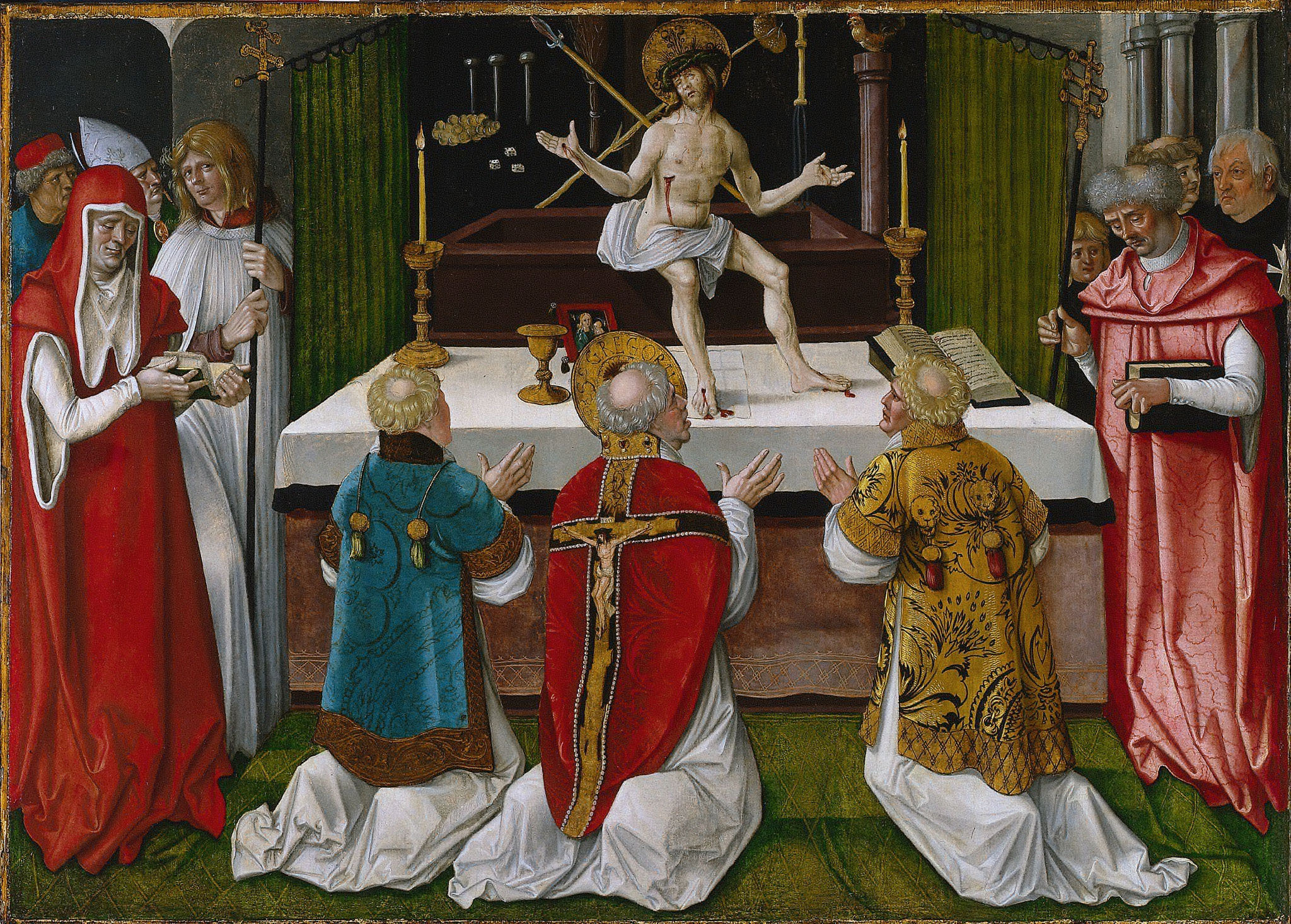When, we ask, did Christ exercise His priestly office according to the order of Melchisedech? At the Last
Supper, when He took bread, blessed it, and said to His disciples: “Take ye, and eat: This is My body.”
(Matt. 26:26). In like manner, taking the chalice with wine, He blessed it, and gave it to His disciples,
saying: “Drink ye all of this, for this is My blood. Do this for a commemoration of Me.” (Matt. 26:27-28;
Luke 22:19).
On that occasion, therefore, Christ exercised His priestly office after the manner of Melchisedech. For if
He did not do so then, He never did so at all throughout His whole life, and in that case, He would not
have been a priest according to the order of Melchisedech. And yet, in what exalted language St. Paul
describes His priesthood: “The others indeed were made priests without an oath, but this with an oath,
by Him that said unto Him: The Lord hath sworn, and He will not repent: Thou art a priest forever. . . .
But this, for that He continueth forever, hath an everlasting priesthood.” (Heb. 7:20, 21, 24). Hence we
see the truth of what the Catholic Church teaches in the Council of Trent: “In the Last Supper, He offered
up to God the Father His own Body and Blood under the species of bread and wine and commanded His
Apostles and their successors in the priesthood to offer them under these symbols when He said: ‘Do
this for a commemoration of Me,’ even as the Catholic Church has always understood and taught. And
this is indeed that clean oblation which cannot be defiled by any unworthiness or malice of those that
offer it, which the Lord foretold by Malachias was to be offered in every place clean to His name.”
(Session xxii, Ch. 1).
The offering of this clean oblation was predicted by the prophet Malachias in the following words: “I
have no pleasure in you, saith the Lord of hosts; and I will not receive a gift of your hand. For from the
rising of the sun even to the going down My name is great among the Gentiles, and in every place there
is sacrifice, and there is offered to My name a clean oblation.” (Malach. 1:10-11). All the Fathers of the
Church consider this passage to refer to the Sacrifice of the Mass. For this prophecy does not find its
fulfillment in the Old Testament, but in the New, wherein also are fulfilled the words which were spoken
by God the Father to His Son: “Thou art My Son, this day have I begotten Thee. Ask of Me, and I will give
Thee the Gentiles for Thy inheritance.” (Ps. 2:7-8). This was accomplished when the heathen were
converted to the Faith by the preaching of the Apostles. The sacrifice here predicted by Malachias
cannot be that which was offered by Christ on the Cross, as non-Catholics assert; for that was made in
one place only, on Calvary, not in every place, as the prophet declares. Nor can the supposition be
entertained that the prophecy refers to a sacrifice of praise or of good works, for these are no oblation
in the proper sense of the word, nor are they always a “clean oblation;” as the prophet says: “All our
justices are before Thee as a filthy rag.” (Is. 64:6).
This prophecy is consequently to be understood as expressly referring to the Holy Mass as the one, only
and true sacrifice of the New Testament, an oblation in itself perfectly pure and holy, which is offered up
to God the Father in all times and in all places by Christ Himself through the instrumentality of His
priests. Christ is the chief High Priest; our priests are but His servants, and He makes use of their hands
and their lips for the offering of a material sacrifice. It is because Christ in His glorified body is not
perceptible to our senses—it being at the same time necessary that there should be a visible victim seenby mortal eyes—that He employs the cooperation of the priest in offering up His Sacrifice. This oblation will continue to be offered until the End of the World.
This article is taken from a chapter of The Incredible Catholic Mass by Fr. Martin von Cochem, O.S.F, which is available from TAN Books.


